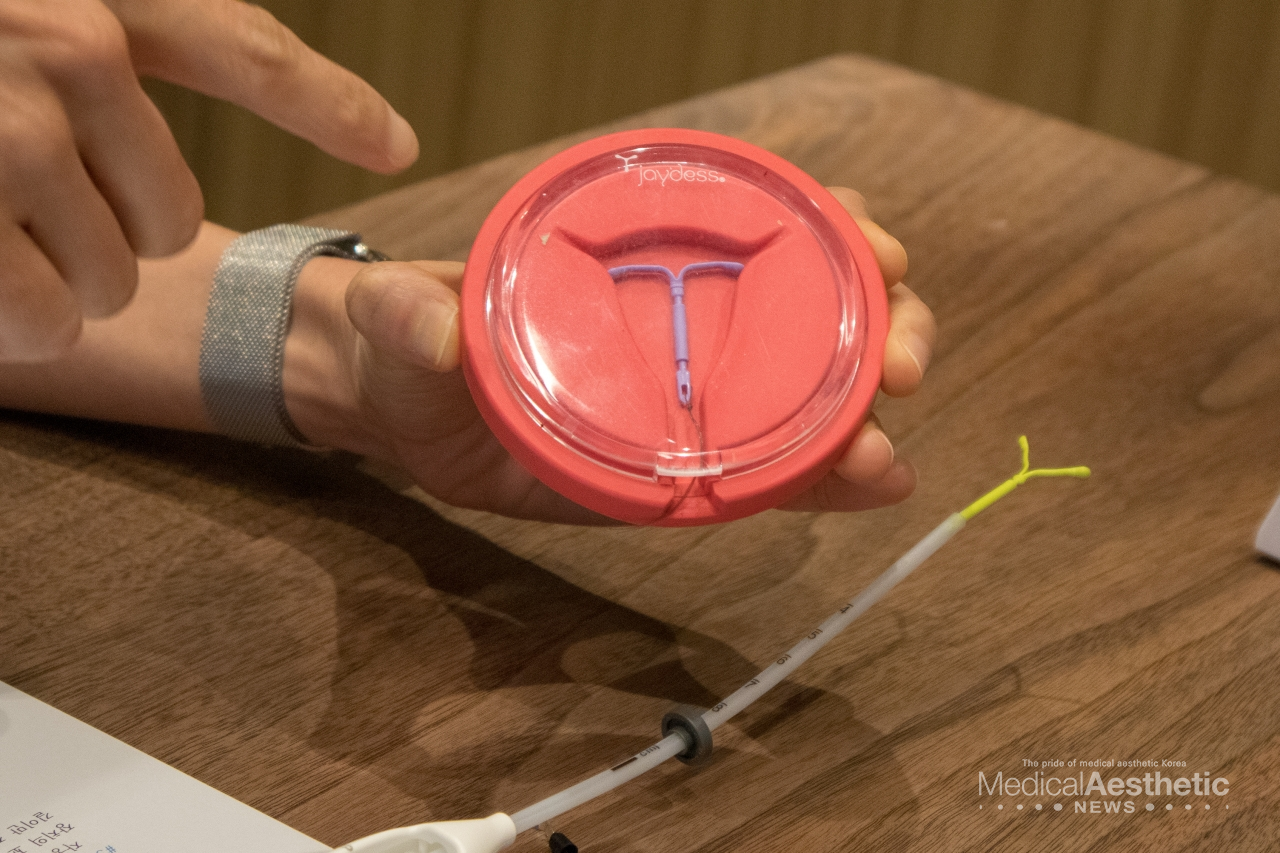Mirena; How it works?
Mirena is a type of loop, a contraceptive device which is placed in the uterus. It works by giving a continuous dose of a hormone called progestin. Once inserted, it has a five-year contraceptive effect, and the success rate of contraception is over 99%. Mirena releases hormones locally in the uterus at a slow rate, small amounts enter the bloodstream. The hormones make thickening the mucus in the cervix, preventing sperm from entering the uterus, inhabiting sperm from reaching egg, thinning the uterine lining to prevent egg implantation.

Mirena placement & removal
Placing Mirena is on 3rd to 7th day of menstruation. It only takes 1 to 2 minutes because Mirena is very small and slim to place easily. There may be some pain, but it doesn’t affect your daily life because it is not severe.
There are rare cases where Mirena falls out of the uterus, but in some cases, it is not recognized on its own, so it is necessary to check it the position of Mirena is okay with an ultrasound once every 6 months to a year. The thread that is touched in the vagina is to facilitate the removal of Mirena, be careful as it may come off it pulled out. The contraceptive effect disappears after 5 years, remember the year and date of the placement, and visit a clinic to remove it.
Mirena is intended for use up to 5 years, but user can stop using it at any time to remove it. When Mirena is removed, progesterone releases together, so ovulation usually returns within 1 to 3 months at the latest. And menstruation re-starts. The endometrium is a place where is continuously regenerated, it gradually thickens and returns to a fertile condition.
Who can place Mirena
- Any woman who wants s birth control over 18 years old
- Between women in 30s and pre-menopausal age who want to control the space of their children
- Woman who has no longer plan to become pregnant
- Woman who has given birth, Mirena can be placed after at least 6 weeks have passed
- Woman who wants to get help with heavy periods
Compare with other methods
| Type | Phill | Implanon | Mirena |
| Access | Oral to Digestive organs | Blood vessels | Place in uterus Small amounts into blood stream |
| Affect to | Hormone reaction for whole body | Hormone reaction for whole body | None |
| Duration | Daily | Every 3 months | 5 years |

Side effects or Beneficials
Mirena release high dose of progesterone, it may occur irregular bleeding, acne or breast pain, body swelling or wight gaining. Conversely, the high dose of progesterone has the advantages of being able to treat gynecological diseases.
Mirena make the uterus lining thin, almost amenorrhea. There will be no menstruation or once every few months, when the menstrual volume is decreased, it is used to treat intrauterine diseases such as uterine fibroids, adenomyosis, endometriosis, heavy periods. If someone has been diagnosed with severe hypermenorrhea, such as anemia, or have severe menstrual cramps that make daily life difficult, or if someone need to protect the endometrium of a patient receiving female hormone therapy, Mirena can help. insurance may be applied to reduce the burden.
Trend of contraception
Dr.Bae said. “When Mirena was developed 20 years ago, there are many negative concerns because of containing hormones. Some people were anxious about having amenorrhea, they believed menstruation should take every month. However, as the times have changed, negative views of Mirena have gradually faded and more and more women who want to avoid the menstrual process due to menstrual cramps get Mirena for the purpose of amenorrhea.”
Recently, following Mirena, various intrauterine contraceptive devices are being developed. A representative product is ‘Kyleena’, which was launched in 2018. The contraceptive effect is the same for 5 years, but the progesterone is 1/3 and the size is smaller than Mirena. It is attracting young women who have never given birth or who only use it for contraception.


